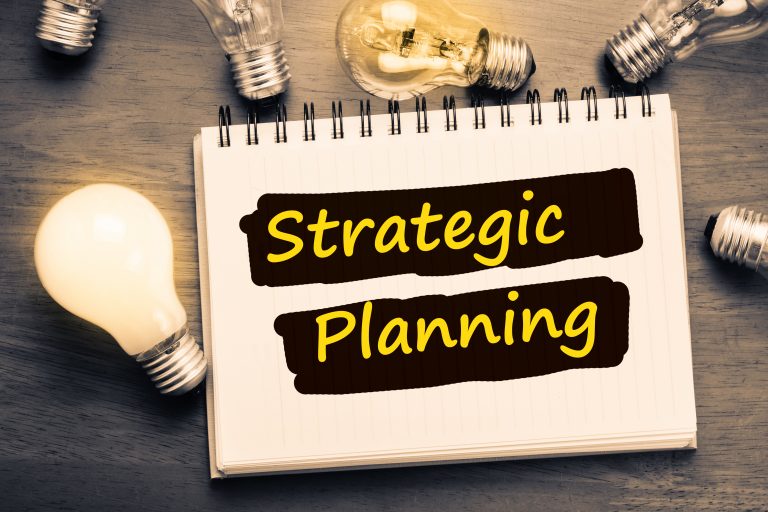Strategic planning is one of my all-time favorite activities. There is nothing better than getting management teams and boards offsite, out of their routines, and thinking about the future.
As an entrepreneur, I live in the tomorrow as soon as we paint its future. When I worked at a credit union, our planning process was always a bit challenging. Each year, we would pile new initiatives onto our existing pile and then struggle with yet another list of tasks. But good strategy shouldn’t determine only what can be added—it should also identify what can be cut out.
Having facilitated a number of credit union strategic planning sessions, we have found a formula that works pretty consistently.
Vision
The first part of a credit union strategic planning process is vision. Vision builds connections between board and management around the future. By building connection around a view of tomorrow, we get excited, we get creative, we get open to new ideas, and we listen to others. CU 2.0 uses our DREAM speech, or our humorous fintech/artificial intelligence keynote, to look into life 5–10 years from now.
(Check out our speaker highlights to get a glimpse of these in action.)
Data & Industry Trends
Many people love the vision part, but a lot of people need the data part. If the vision isn’t supported by data, detail-oriented skeptics won’t get on board. We’ll cover key industry metrics and data to ensure everyone can get on the same page about the current state of life at credit unions. We may focus on average member age, or perhaps on product penetration, or possibly on interest margin. There are many industry trends, and we’re happy to work with credit union leadership teams to identify key areas for analysis.
Sometimes data and industry trends can cause eyes to glaze over and heads to nod. Our goal is to keep the energy high and engagement up, so often we call on key participants to add “color” or more detail to what the data is describing.
Archetypes
One of the biggest challenges we see at almost every credit union is a lack of clear brand identity and focus. This makes sense. Most credit unions were founded many decades ago to solve a very specific problem. However, since their founding, most credit unions have grown and changed considerably, and their brand identity has blurred or shifted as a result. This means that modern credit unions often don’t understand their brand positioning—or what role they play in their members’ lives.
There are twelve different brand archetypes whose identities are deeply rooted in our cultures and psyches. These archetypes play the main role in culturally recognizable stories. Once we understand a brand’s archetype, we can help credit unions see how various activities, strategies, messaging, and more will detract from or reinforce a brand.
With help from credit union leadership, CU 2.0 distinguishes an appropriate brand archetype from key brand attributes. Together, we’ll see whether a credit union fits into The Hero, The Caregiver, or The Sage. Or, for adventurous brands, perhaps The Explorer, The Ruler, or The Creator. Finding your archetype will help your credit union better tell its story.
Service, Profit, Growth Challenge
When I first started in this industry, the average credit union had one or two computers or IT systems. Over the past twenty-five years, this has evolved to where the average credit union has one server for every two employees. Let’s face it, the modern credit union is a technology company as much as it is a credit union. Accepting this truth has major implications on how to approach the future.
To plan for tomorrow, we need board members and management to be aligned on which is more important: service, profit, or growth. Ever wonder why one person always makes a different choice than the rest of the team? Maybe they care more about profit than service? The reality is that everyone prioritizes these differently.
We take into account the changing nature of the credit union model when we run our alignment exercise. We discuss service, profit, and growth to get everybody on the same page for better decision making.
Plan Definition
Once we have alignment on brand archetypes and where the credit union stands on service vs. profit vs. growth, then we have a good foundation to build a plan for the future. We begin by focusing on specific goals, ideas, and strategies that will propel the credit union forward.
Each of these goals is defined and focused around specific outcomes. (It’s important to measure outcomes which are the sum of inputs and outputs and to avoid focusing on the inputs and outputs.) Our facilitators work hard to focus on the outcome statements and big wins of tomorrow.
Finally, we prioritize tactics based on impact, effort, and urgency. This tactical plan, along with the sections above, will all be provided in a strategy document after the event.
Stop Doing
The final phase of the credit union strategic planning process is to figure out what we can stop doing personally, as a team, and as a credit union, to free up the time needed to focus on the future.
Are you interested in having CU 2.0 facilitate your credit union’s next strategic planning session? Let us know here.
Need a list of other credit union planning session providers? Follow this link.




